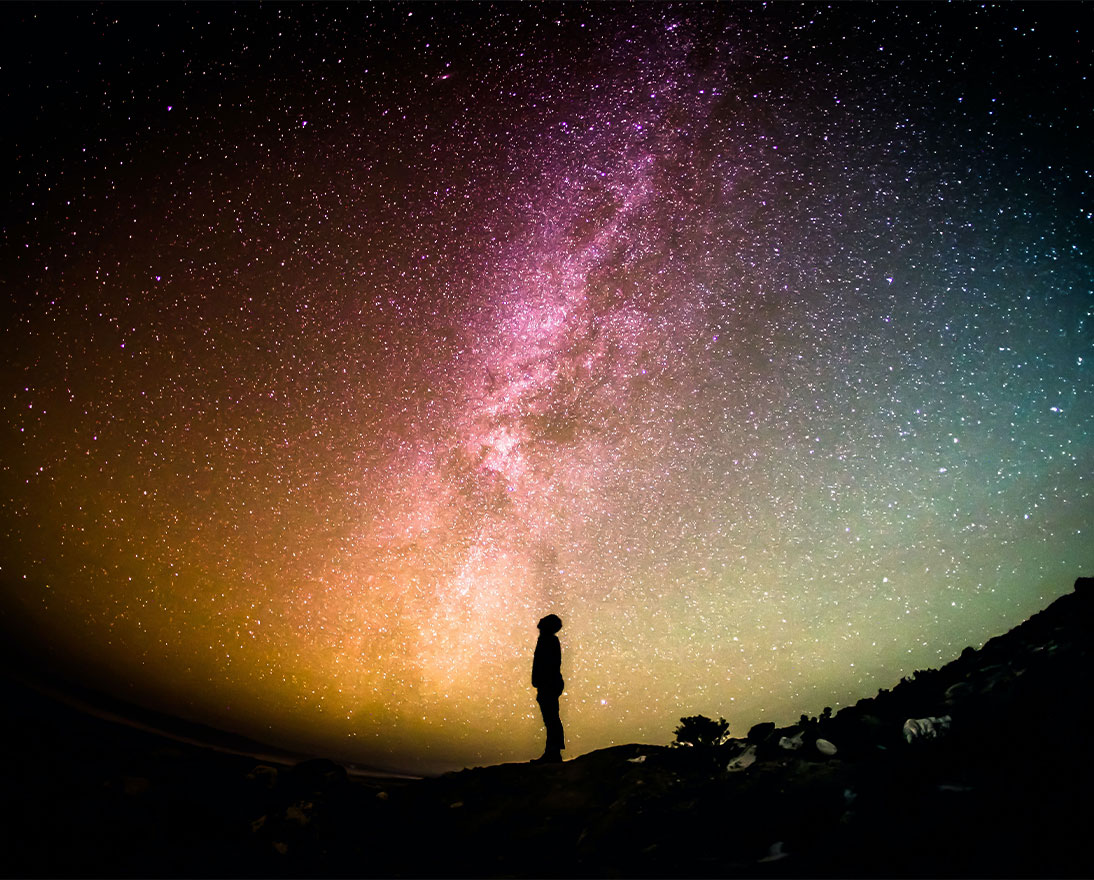Space congestion: An increasingly contested and crowded frontier
TechnologyArticleJuly 5, 20226 min read
Space can help improve life on Earth and address some of humanity’s most pressing challenges. But as private companies jostle with countries in an increasingly crowded and unregulated frontier, fault lines are beginning to appear.
When people think about Space they might once have imagined astronauts exploring the outer limits and superpowers racing to reach the moon. But when NASA retired its shuttle program in 2011, a new approach to orbital exploration opened up.
Space is now more competitive and more crowded, with billionaires not superpowers racing to blast off. And it’s no longer about a moonshot, but mining, technology, digital telecommunications and tourism – it seems like every other week another billionaire is blasting into space for an atmospheric joyride.
Most new commercial entrants focus on the more mundane ways that space tech transforms our everyday lives on Earth, such as broadband, GPS services, climate monitoring, timing and financial transactions, via a vast invisible infrastructure of satellites.
Low-Earth orbit is crowded with satellites. Around 11,000 have been launched since Sputnik 1 in 1957, and as many as 70,000 more could be put into orbit over the coming decades. An increased use of space brings bigger risks, with the Global Risks Report 2022 identifying the overcrowding of space and the lack of space governance, as a pressing threat over the coming years.
China’s recent complaints to the UN space agency show that this is already a problem. China’s space station was reportedly twice forced to take evasive action last year to avoid colliding with the Elon Musk’s Starlink satellites. Foreign ministry spokesman Zhao Lijian accused the U.S. of “double standards,” and putting astronauts’ lives in danger. He urged the U.S. to act responsibly, abide by outer space treaties and make sure such incidents don’t happen again.
Musk told the Financial Times his Space X satellites hadn’t blocked anything: “A couple of thousand satellites is nothing. It’s like, hey, here’s a couple of thousand cars on Earth — it’s nothing.”
But according to space experts, lower barriers to entry in the space race and the increase in commercial interest is crowding our planet’s orbit. It’s not just active satellites that are a collision risk, there’s also the debris dead satellites leave behind.
Space junk and the Kessler Effect
The Global Risks Report also warns about a phenomenon known as the “Kessler Effect,” which increases the risk of collision and congestion.
The Kessler phenomenon is named after former NASA scientist Donald Kessler. In a paper written in 1978 titled, Collision Frequency of Artificial Satellites: The Creation of a Debris Belt, Kessler sounded the alarm bell that more space collisions were inevitable as more satellites were put into orbit. He suggested the threat increases exponentially with each new collision. Objects put into orbit would inevitably collide, and keep colliding, generating space debris in what Kessler and his co-author Burton Cour-Palais called a “cascade effect.”
According to NASA, there are millions of pieces of space debris – or space junk – in orbit: “There are approximately 23,000 pieces of debris larger than a softball orbiting Earth. They travel at speeds up to 17,500 mph, fast enough for a relatively small piece of orbital debris to damage a satellite or a spacecraft. Even tiny paint flecks can damage a spacecraft when traveling at these velocities.”
Space debris is an issue of global concern that threatens our continued use of near-Earth space for the benefit of humankind. That’s according to the European Space Agency, who have created a series of infographics and podcasts to tell the story of space debris and explain the risks.
Could there be a war in space?
Regulating low orbit space is not just about trying to prevent collisions. The dynamics and complexity of increased space activity from a growing number of players could lead to an escalation in geopolitical tensions. Recent warning signs include an anti-satellite weapons test carried out by Russia in mid-November 2021 that generated more than 1,500 pieces of trackable space debris and threatened astronauts on the International Space Station.
A developing hypersonic weapons arms race is another signal that powers will increasingly use space technologies to exert military might. With expanding geospatial intelligence, soon much of Earth will be visible from above, which could spur some nations to “blind, jam or otherwise interfere” with space observation of Earth activity, says the Global Risks Report. Global reliance on space-based or supported technologies, such as GPS, make such systems tempting military targets.
International treaties say space must be used for the benefit of all, and nations must collaborate so space tech can help meet global development goals. Yet there’s a growing concern over space warfare with some countries, such as the U.S., China, Russia and Japan, increasing their investment in military and commercial activities in outer space.
Space security experts Brian Weeden and Victoria Sampson, who coedited the Secure World Foundation’s Global Counterspace Capabilities report, say more public awareness and international regulation is needed if space is going to be a race for peace not war.
The rules of the sky
Space governance is having a moment of reckoning. The U.S. Artemis Accords are non-binding multilateral agreements that attempt to establish international norms for exploring the moon. However, many countries will not sign – including Russia and China, two of the world’s biggest space powers. They cite concern that the U.S. is leading a process previously the domain of the United Nations, and that the resource extraction elements may contravene the 1967 Outer Space Treaty that outlaws nations laying claim to property in space.
The International Space Station has always been a beacon for international cooperation, but space alliances are shifting. The advent of SpaceX meant NASA no longer had to rely on Russian rockets, and the Russian space program took a financial hit. Following their refusal to sign the Artemis Accords, Russia and China have signed their own agreement in a move towards planning a rival lunar station.
Growing commercial and geopolitical rivalries mean that space remains high on the list of Global Risks. Space warfare may sound like a plot in a sci-fi movie. But most people thought war in Europe was something consigned to 20th century history books until Russia’s invasion of Ukraine. It means we will all need to work harder to ensure 60 years of international law will prevail and continue to protect space for the benefit of all.



